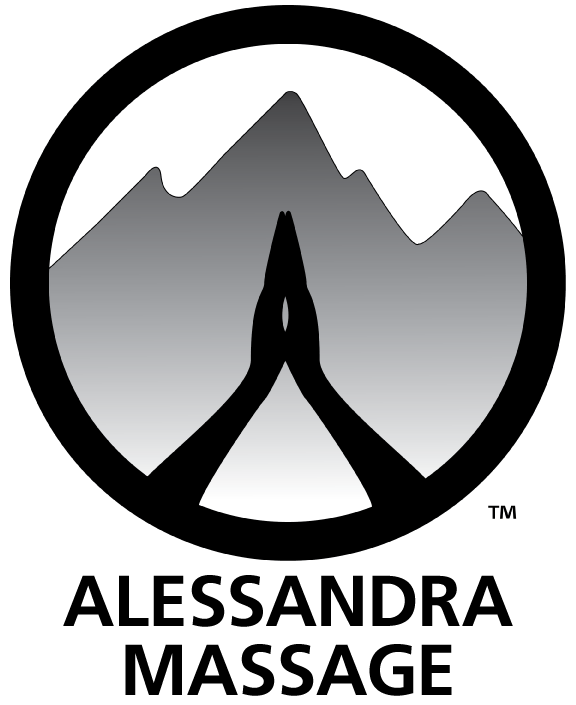In the fall of 2016 Alessandra was certified in ACE Medi/Massage Vacuum Therapy™, which can be incorporated into any regular massage treatment upon request. This “Active Cup” method pulls tissues up, releasing, circulating, hydrating, lifting and stretching soft tissues, and has nearly countless beneficial physiological effects. A few therapeutic benefits include: releasing deep muscular tissue issues, softening scar tissue and adhesions, lymph drainage, opening energy flow channels and decreasing pain and inflammation.
About Cupping
Cupping, and the signature dark marks left on recipients of its treatments, is gaining steam in western culture. This form of bodywork has been receiving mainstream attention with the media's exposure of marks on Olympian athletes in Rio, and the growing popularity of acupuncture and cupping in our society. While these marks seem to be trending fashionable lately, cupping is actually an ancient tool, which has found its place in the modern world of wellness, and contemporary massage-cupping techniques offer a vast array of health benefits, but need not leave clients marked with the telltale "cup kiss". Recently certified in ACE™ massage/medi-cupping therapies, I was amazed to learn of the extensive healing potential associated with cupping therapies.
The art of cupping has developed over time from its roots of using hollowed animal horns to suction toxins from snake bites and skin infections, later evolving to treat a variety of ailments with bamboo cups, then porcelain, glass, and now also silicon and plastic. Cupping has been documented for over 3,000 years in China, used in multiple ways including surgery, drawing blood flow away from the open site, and to encourage the circulation of chi, life-force energy, on acupuncture points and meridians, and dispelling stagnation of blood. A traditional Chinese medical saying states, "Acupuncture and cupping... more than half the ills cured". The Ebers Papyrus, an Egyptian medical text dating back to 1550 BC, refers to the application of "wet" cups (puncturing the skin to allow bloodletting) for accelerated healing of disease, fever, pain, vertigo, appetite, and constipation. Hippocrates and Mohammed were both great proponents of cupping, as the practice spanned ancient Greek and Islamic cultures, later spreading to Europe, and has also been documented within Native American culture. Until the late 1800's wet-cupping was standard, but soon after evolved to bloodless, dry cupping, though no less effective.
Massage and medi-cupping techniques, operate under the principle of removing stagnation and blockage to reduce pain, a theme guiding most traditional healing practices. Massage cupping is used to soften tight muscles, loosen and lift muscular attachments, adhesions and connective tissue, increase hydration and blood-flow, reduce inflammation and scar tissue, and open lymphatic pathways to drain excess fluids and toxins. ACE™ massage cupping techniques primarily use "active" cupping, where the practitioner keeps the cups in motion most of the time, lifting, gliding, rotating, shaking and twisting them, creating negative gravitational force, actually the opposite of traditional massage, separating and creating space between the layers of body tissue. Like a vacuum on carpet, suction pulls out interstitial debris from body tissues. Massage cupping can separate bound fascial tissues, such as commonly found between overworked muscles. Cups can be “parked” on stubborn tight muscles, encouraging lift, circulation and release, similar to acupuncture-cupping, but only for a few minutes. Occasionally, a dark mark will show up on the areas most in need of relief, as more stagnant fluids are drawn to the surface than in better circulated areas, but in general, massage-cupping will not leave the degree of marking associated with traditional cupping.
Conditions identified to be responsive to medi-cupping bodywork therapy include: fibromyalgia, bursitis, tendonitis, constipation and IBS, stagnant lymph and edema, poor circulation, sciatica, poorly nourished skin and muscle tissue, lung congestion, cellulite, toxicity, blood pressure issues, asthma, pneumonia, neuralgia, pre- and post- operative conditions, TMJ dysfunction, Parkinson’s disease, chronic pain, plantar fasciitis, and athletic stress and injury.
A typical massage session can incorporate cups where necessary with a little extra time. 15-30 minutes at the beginning of a massage session can prepare a client’s tissues to receive the maximum benefit from their treatment. Active cupping primes tissues for optimum circulation, clearing obstructions and encouraging efficient flushing of toxins. During a massage, cups can rest on especially tight areas while the therapist works on other areas of the body, or be used on joints and trigger points to complement hands-on applied pressure and joint mobilizations. If you have issues with your tissues cupping may be a promising therapy to pursue!
For further information or to schedule a massage appointment please contact Alessandra Jacobson at Alison Palmer Physical Therapy and Wellness Center, (970) 729-1737. We are located in the Cimarron Lodge at the bottom of lift 7. Wellness is the full integration of mind, body and spirit. We look forward to helping you towards a healthier life.


